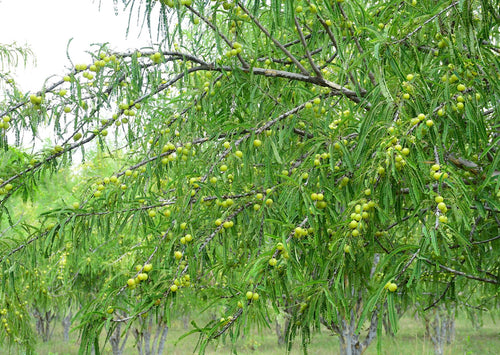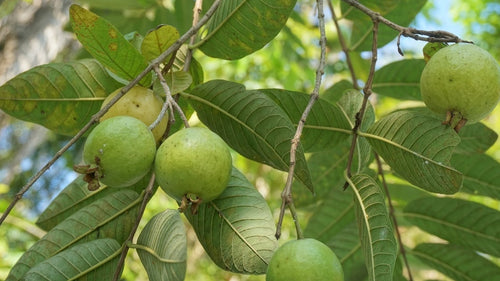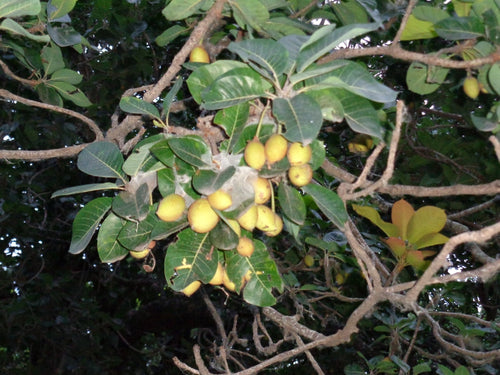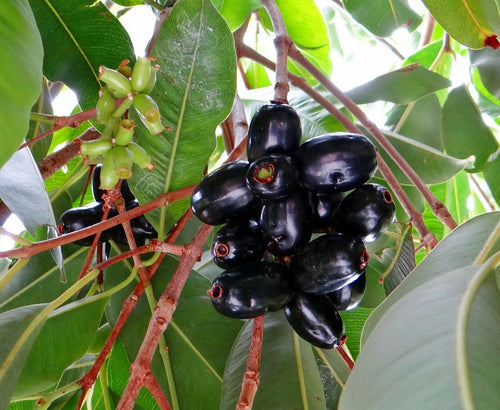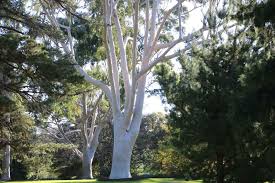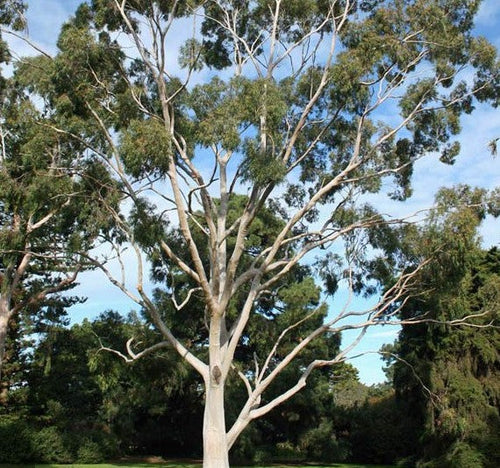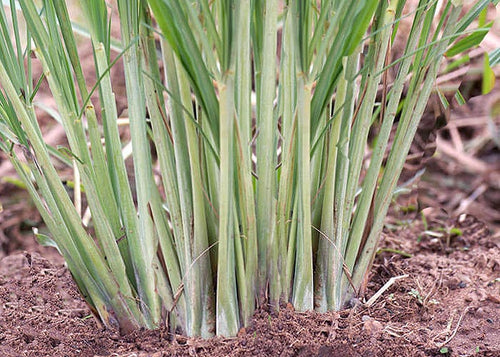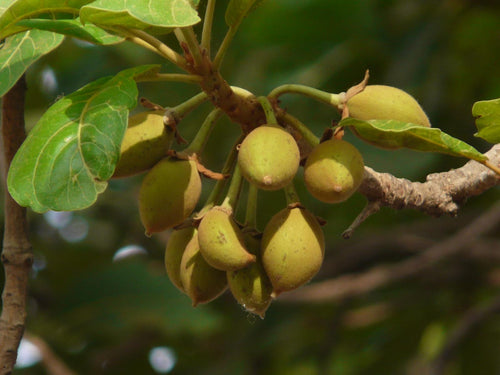"Gensol Delhi’s Urban Forest Initiative: Nurturing Nature, Inspiring Change"
Gensol Delhi’s tree plantation initiative, focused on cultivating an urban forest, marks a significant commitment to environmental sustainability as p Read more
Project Update 2
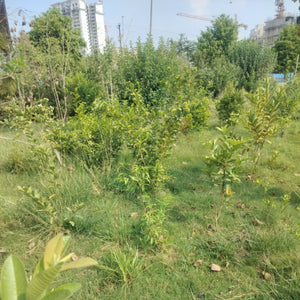
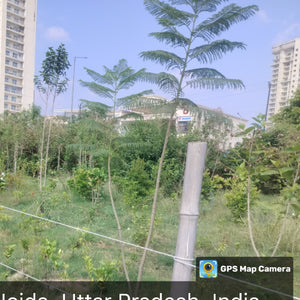
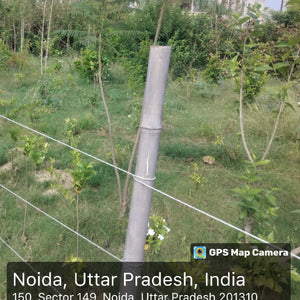


Project Update 1

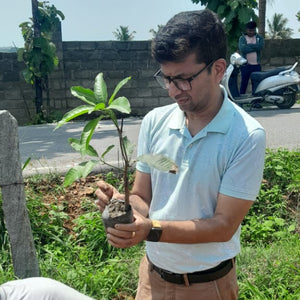
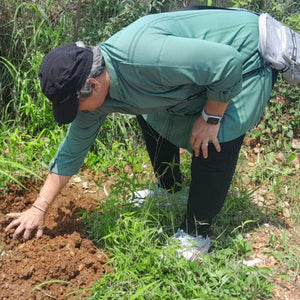
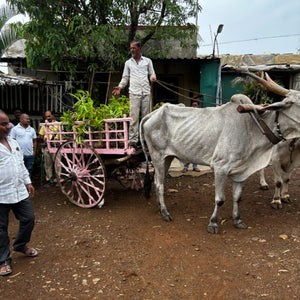
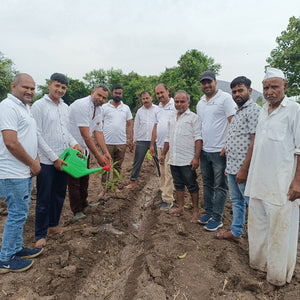
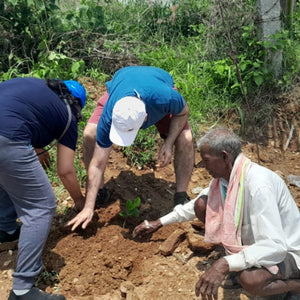
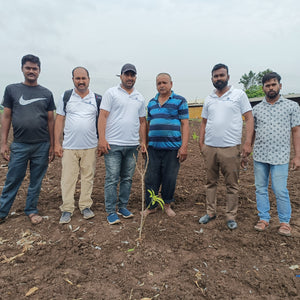
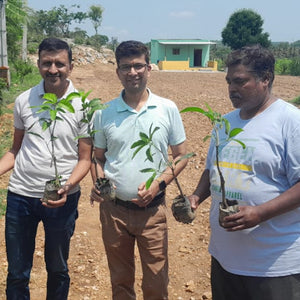
Digital Forest
Forest with 50 Trees planned
Want to plant your tree now?
Plant a Tree @ 299"Gensol Delhi’s Urban Forest Initiative: Nurturing Nature, Inspiring Change"
Gensol Delhi’s tree plantation initiative, focused on cultivating an urban forest, marks a significant commitment to environmental sustainability as part of the company’s CSR efforts. This initiative aims to transform underutilized urban spaces into thriving green areas, enhancing Delhi’s ecosystem and mitigating urban heat. By planting a diverse mix of native trees, Gensol promotes biodiversity, creates green corridors for local wildlife, and improves air quality.
Through active employee involvement, the project fosters environmental awareness and stewardship among participants, positioning Gensol as a leader in corporate social responsibility. This urban forest not only symbolizes Gensol's dedication to a greener future but also benefits the community by offering cleaner air, shade, and improved well-being, aligning with the vision of a sustainable urban environment.
Tree Plantation Date
5th June 2024
Plantation Location
150, Sector 149, Noida, Uttar Pradesh, 201310
Trees Planted
Total Count: 50 Trees
Species Name: Mahua, Kaner, Mogara, Jamun, Karanj, Amla, Gudhal, Kush, Lemon, Guava, Anar, Karonda
Forest Type: Urban Forest
Gensol Delhi’s urban forest initiative is a transformative CSR effort focused on creating a vibrant green space in the heart of the city. By planting a diverse range of native trees, this project enhances biodiversity, reduces air pollution, and supports local wildlife. The forest also fosters community involvement, inviting employees and residents to contribute to the planting and care of the trees. This initiative not only beautifies the urban landscape but also provides cleaner air, shade, and a peaceful retreat for the community, reinforcing Gensol's commitment to a sustainable and resilient Delhi.
Advantages Of Urban Forest
Enhanced Air Quality
Gensol’s urban forest plays a crucial role in purifying Delhi’s air by absorbing harmful pollutants like carbon dioxide, sulfur dioxide, and particulate matter. This natural filtration process significantly improves air quality, helping reduce respiratory ailments and other health issues caused by pollution.
Increased Biodiversity
By planting diverse native species, the initiative promotes a balanced ecosystem that supports a wide range of flora and fauna. This biodiversity creates a natural habitat for birds, insects, and other wildlife, reviving Delhi’s ecological richness and helping to maintain environmental stability.
Cooling the Urban Environment
Trees provide essential shade and release water through transpiration, which cools surrounding areas and helps combat the “urban heat island” effect. This natural cooling effect reduces the demand for energy-intensive air conditioning, contributing to a more climate-resilient city and a lower carbon footprint.
Community Health and Well-being
Gensol’s urban forest offers a serene green space where community members can unwind, exercise, or connect with nature. Studies show that exposure to green spaces can reduce stress, improve mental health, and enhance overall well-being, making the forest an asset for community health.
Carbon Sequestration for Climate Impact
The trees planted as part of the urban forest absorb and store carbon dioxide, a critical step in reducing greenhouse gas emissions. This sequestration helps offset some of Delhi’s carbon emissions, aligning with Gensol’s commitment to climate action and environmental responsibility.
Noise Reduction
The urban forest serves as a natural sound buffer, helping to reduce noise pollution from traffic and urban activities. This noise reduction creates a quieter, more peaceful environment for residents, enhancing quality of life and fostering a more tranquil urban atmosphere.
Aesthetic and Economic Value
Beyond environmental benefits, Gensol’s urban forest beautifies the urban landscape, potentially increasing local property values and attracting eco-conscious visitors. This enhancement also promotes eco-tourism and can stimulate local businesses by increasing foot traffic and community engagement.
Activities During Tree Plantation
During Gensol Delhi’s tree plantation initiative, employees actively engage in planting and watering trees, contributing directly to the growth of an urban forest. With the site prepared in advance, employees focus on carefully planting each sapling and ensuring it receives sufficient water, fostering an immediate connection to the forest's growth. This hands-on involvement allows participants to take pride in the transformation of the space, knowing their actions directly contribute to creating a sustainable green oasis in the city.
Tree Plantation Purpose
Here are the Sustainable Development Goals (SDGs) achieved through Gensol Delhi’s tree plantation initiative in an urban forest for employee engagement:
1. SDG 3: Good Health and Well-being
The urban forest contributes to better air quality by filtering pollutants and providing cleaner air, benefiting residents' respiratory health. Additionally, the green space offers a peaceful retreat, encouraging outdoor activities and stress reduction. The mental and physical benefits of green spaces support overall community health, aligning with SDG 3.
2. SDG 11: Sustainable Cities and Communities
By creating a green space in Delhi’s urban setting, Gensol promotes sustainable urban development. This initiative reduces the urban heat island effect, enhances biodiversity, and provides a sanctuary for wildlife, contributing to a more livable, resilient city. Such urban forests make cities more inclusive, safer, and sustainable for future generations.
3. SDG 13: Climate Action
The trees planted in the urban forest act as natural carbon sinks, capturing and storing carbon dioxide, thus helping to mitigate climate change. This initiative represents Gensol’s proactive approach to climate action, as it offsets carbon emissions and provides a buffer against climate-related impacts, contributing to SDG 13.
4. SDG 15: Life on Land
By focusing on native tree species, Gensol’s urban forest initiative restores and conserves local biodiversity, creating a habitat for birds, insects, and other wildlife. This effort supports SDG 15 by promoting the sustainable use of ecosystems, conserving biodiversity, and supporting natural habitats within the urban landscape.
5. SDG 17: Partnerships for the Goals
Gensol Delhi's partnership with Grow Billion Trees has been instrumental in advancing , Partnerships for the Goals, by uniting resources, expertise, and shared commitment to sustainability. Grow Billion Trees provided essential guidance on sustainable planting practices, species selection, and site preparation, enabling the initiative to achieve maximum ecological impact. This collaboration allowed Gensol to create a more resilient and diverse urban forest, promoting long-term environmental benefits. By working together, Gensol and Grow Billion Trees effectively combined corporate and environmental expertise, fostering a stronger community impact and demonstrating the power of partnerships in achieving meaningful sustainability goals.
ESG Achieved Through Urban Forest
Environmental (E)
Gensol Delhi’s tree plantation initiative in an urban forest contributes significantly to environmental stewardship by reducing air pollution, enhancing biodiversity, and improving soil quality. By focusing on native species, this urban forest initiative fosters a balanced ecosystem, serving as a natural habitat for wildlife and promoting a healthier urban environment. The trees also act as carbon sinks, capturing carbon dioxide and supporting climate resilience, which aligns with Gensol's commitment to reducing its environmental footprint.
Social (S)
This initiative strengthens community ties and promotes employee engagement, fostering a sense of collective responsibility toward sustainability. Employees are directly involved in the planting and nurturing of the forest, creating a shared experience that enhances teamwork and environmental awareness. The urban forest also benefits the broader community by providing cleaner air, a peaceful green space, and improved public health, showcasing Gensol’s dedication to social well-being and positive community impact.
Governance (G)
Grow Billion Trees has played a vital role in helping Gensol Delhi achieve the Governance aspect of its ESG goals in the tree plantation initiative. By providing expert guidance on sustainable planting, site preparation, and species selection, Grow Billion Trees ensured that the initiative adhered to best practices and ethical standards. This partnership strengthened Gensol's commitment to transparency and accountability, aligning the project with long-term environmental and social goals. With Grow Billion Trees’ support, Gensol could effectively implement a structured, measurable approach to the project, reflecting responsible governance and enhancing its credibility among stakeholders who value sustainable, ethically-managed initiatives.
Commitment by Grow Billion Trees
Grow Billion Trees is committed to driving sustainable plantation efforts, ensuring every initiative aligns with key environmental objectives and promotes long-term ecological balance. They focus on selecting native tree species that are well-adapted to local ecosystems, ensuring a higher survival rate and stronger environmental impact.
To maintain plant health and longevity, Grow Billion Trees emphasizes continuous maintenance and regular monitoring of the plantations. This approach helps ensure that each tree thrives, contributing effectively to both biodiversity and climate resilience.
Transparency is a core principle in their operations. Clients receive comprehensive reports, including geo-tagging of planted trees, survival rate updates, and ongoing progress reports. This level of openness allows clients to track the direct impact of their contributions, reinforcing trust and accountability.
Through their dedication to sustainable practices, Grow Billion Trees ensures that every plantation project leaves a lasting positive footprint on both the environment and the local communities it serves.
Summary
Gensol Delhi's tree plantation initiative focuses on engaging employees in creating a thriving urban forest, transforming underutilized urban spaces into vibrant green areas. With the site prepared in advance, employees participate directly in planting and watering native trees, fostering a strong connection to sustainability and environmental stewardship. This initiative not only contributes to cleaner air and improved biodiversity but also enhances community well-being by providing a peaceful retreat within the city. Through this urban forest project, Gensol reinforces its commitment to environmental impact and social responsibility, while inspiring employees and the broader community to contribute to a greener future.
Trees for Corporates
Trending
Most Popular
1. Gensol Delhi Urban Forest Initiative
Gensol Delhi's Urban Forest Initiative isn’t just about planting trees; it’s about planting dreams of a greener future! Imagine a space in Delhi where birds sing, the air feels lighter, and wildlife gets a new playground—all thanks to the power of community and corporate responsibility. Gensol’s team and Grow Billion Trees have created a vibrant ecosystem that tackles pollution, invites biodiversity, and provides a peaceful escape within the urban jungle. Employees don’t just plant trees here; they plant legacies. And each sapling stands as a promise—one that says, “Delhi, we’re greening you back to life!” By embracing sustainability through an urban forest, Gensol has taken CSR to heart, one leaf at a time.
2. Employee Engagement in Urban Forestry
At Gensol Delhi, employee engagement goes beyond typical team-building; here, it's about building forests! Employees trade their desk pens for shovels, actively creating an urban forest that contributes to Delhi’s green cover. It’s a hands-on experience that not only strengthens their environmental conscience but also fosters teamwork in the most refreshing way. This tree-planting initiative has become a mini-adventure where everyone walks away feeling closer to nature and each other. So, the next time someone says Gensol is "rooted" in teamwork, they mean it literally—and greenly!
3. CSR Urban Forestry Impact
Who said CSR is all about spreadsheets and board meetings? Gensol Delhi proves otherwise with its urban forestry CSR project that’s both impactful and green! This initiative breathes life into Delhi’s concrete-heavy landscape, turning grey into green and creating a healthier environment for all. The urban forest reduces carbon, enhances biodiversity, and gives the city a much-needed breath of fresh air. Plus, Gensol’s employees get to be hands-on changemakers, moving CSR from policy to practice—one sapling at a time. It’s sustainable development that makes you smile every time you walk by it.
4. Benefits of Urban Forests in Delhi
Urban forests are Delhi’s new superheroes, and Gensol’s tree plantation initiative proves it! Beyond improving air quality, these mini-forests cool the city, create biodiversity hubs, and even reduce noise pollution. In a city that rarely sleeps, a spot with trees and quiet is worth its weight in gold. With Gensol’s commitment to growing green spaces, Delhi gains not just a forest but a future where clean air and shady spots are more accessible than ever. Call it eco-friendly real estate for the community, courtesy of Gensol!
5. Biodiversity in Urban Tree Planting
Urban forests don’t just mean more trees—they mean more life! Gensol Delhi’s urban forest project creates habitats for birds, butterflies, and the occasional curious squirrel, restoring a slice of wilderness within the city. This biodiversity boost is not just for nature lovers but for anyone who values fresh air and thriving ecosystems. Gensol’s dedication to biodiversity means that Delhi’s urban wildlife has a new home, proving that even cities can be places where nature thrives. Think of it as a wildlife retreat with an “eco-luxe” upgrade.
6. Tree Plantation for Cleaner Air
When it comes to fighting Delhi’s infamous pollution, Gensol’s tree plantation initiative is like an air purifier, but better! Each tree planted acts as a natural filter, catching pollutants and giving back the clean air the city so desperately needs. It’s not just CSR—it’s CPR for Delhi’s air! Thanks to Gensol and its dedicated employees, each breath feels a little fresher. And in a place where clear skies can be rare, every planted tree is a breath of fresh air (literally) for Delhi’s residents.
7. Climate Action through Urban Forests
Gensol Delhi’s urban forest is not just a green patch; it’s a climate crusader! In a world that’s warming up, Gensol’s initiative helps combat climate change by reducing carbon emissions and restoring ecological balance. Every tree is a mini carbon sink, soaking up greenhouse gases and giving back oxygen. Through climate action at the root level, this initiative shows how small acts can lead to big climate wins. So, while Delhi’s traffic may still honk away, Gensol’s trees are quietly working to cool the city down.
8. Gensol’s Commitment to Sustainable Development
When Gensol says it’s committed to sustainable development, it means business—green business! The Delhi urban forest is a testament to the company’s dedication to creating eco-friendly spaces that benefit people and the planet. This initiative doesn’t just tick a CSR box; it plants a future where cities and nature coexist. Gensol’s tree plantation project is like sustainable development with a capital “S” and “D,” showing that a greener world starts with one initiative and many committed hands.
FAQ
What is the purpose of Gensol Delhi's tree plantation initiative in the urban forest concept?
Gensol Delhi's tree plantation initiative aims to create a sustainable urban forest that contributes to cleaner air, increased biodiversity, and improved community well-being. Through this initiative, we provide green spaces within Delhi, combatting pollution and enhancing the urban ecosystem. By involving employees and the community, we create a lasting impact on the environment, turning city spaces into flourishing habitats.
How does Gensol Delhi involve employees in tree plantation activities?
Our employees actively participate in planting and watering trees, helping them connect with nature while promoting teamwork and environmental responsibility. We organize hands-on activities where employees plant saplings and water them, fostering a deep sense of ownership. This engagement helps our team contribute meaningfully to environmental sustainability while enhancing workplace morale.
What benefits does the Gensol Delhi urban forest offer?
Our urban forest initiative offers numerous benefits, including cleaner air, reduced urban heat, and increased biodiversity. It also provides a serene green space for relaxation, positively impacting mental well-being. By reducing noise pollution and enhancing local habitats, the urban forest promotes a healthier, more sustainable city.
How does Gensol Delhi’s tree plantation initiative support climate action?
Our initiative contributes to climate action by absorbing carbon emissions, creating a natural carbon sink within the city. Each tree plays a role in lowering greenhouse gas levels, helping to offset pollution in Delhi. This proactive approach aligns with our commitment to sustainability and addresses climate change at a local level.
Why is biodiversity important in Gensol Delhi’s urban forest?
Biodiversity is vital to creating a balanced ecosystem. By planting diverse native species, we support local flora and fauna, encouraging a healthier environment. This biodiversity provides habitats for various wildlife, which strengthens the ecological stability of our urban forest and enriches Delhi’s natural landscape.
How does Gensol Delhi's urban forest improve air quality?
Our urban forest acts as a natural air filter, trapping pollutants and releasing oxygen. Each tree absorbs carbon dioxide, sulfur dioxide, and other harmful gases, purifying the air and promoting better respiratory health. This helps counteract pollution and provides cleaner air for Delhi residents, making a significant environmental impact.
What makes Gensol Delhi's tree plantation initiative eco-friendly?
Our approach prioritizes native tree species, sustainable planting practices, and long-term ecosystem health. By selecting trees suited to Delhi’s climate, we ensure a low-maintenance, eco-friendly project that thrives naturally. This thoughtful strategy makes our initiative both sustainable and impactful in supporting Delhi’s green cover.
How does Gensol Delhi’s tree plantation initiative benefit local communities?
Our urban forest initiative offers accessible green spaces, promoting physical and mental well-being for nearby communities. It provides a natural retreat within the city, encouraging community members to connect with nature. The forest also supports cleaner air, reduced noise pollution, and a more sustainable environment for local residents.
What role does Grow Billion Trees play in Gensol Delhi's initiative?
Grow Billion Trees provides expert guidance on sustainable planting practices and species selection. This partnership ensures that our initiative follows best practices, promoting transparency and accountability in our operations. Together, we work to create a meaningful, eco-friendly impact that aligns with Gensol’s commitment to environmental governance.
How does Gensol Delhi’s tree plantation initiative align with the Sustainable Development Goals?
Our initiative supports multiple SDGs, including SDG 13 (Climate Action) and SDG 15 (Life on Land). By creating an urban forest, we address air quality, biodiversity, and community health. Through sustainable practices and employee engagement, we contribute to a greener, more resilient urban environment aligned with global sustainability goals.
- Choosing a selection results in a full page refresh.
- Opens in a new window.


